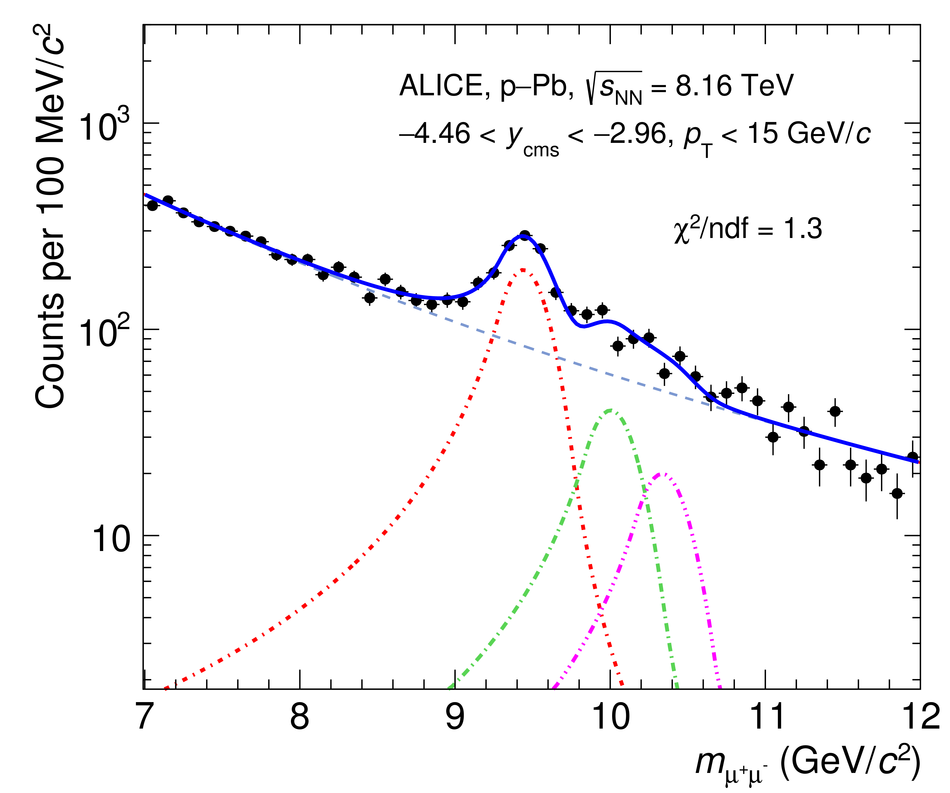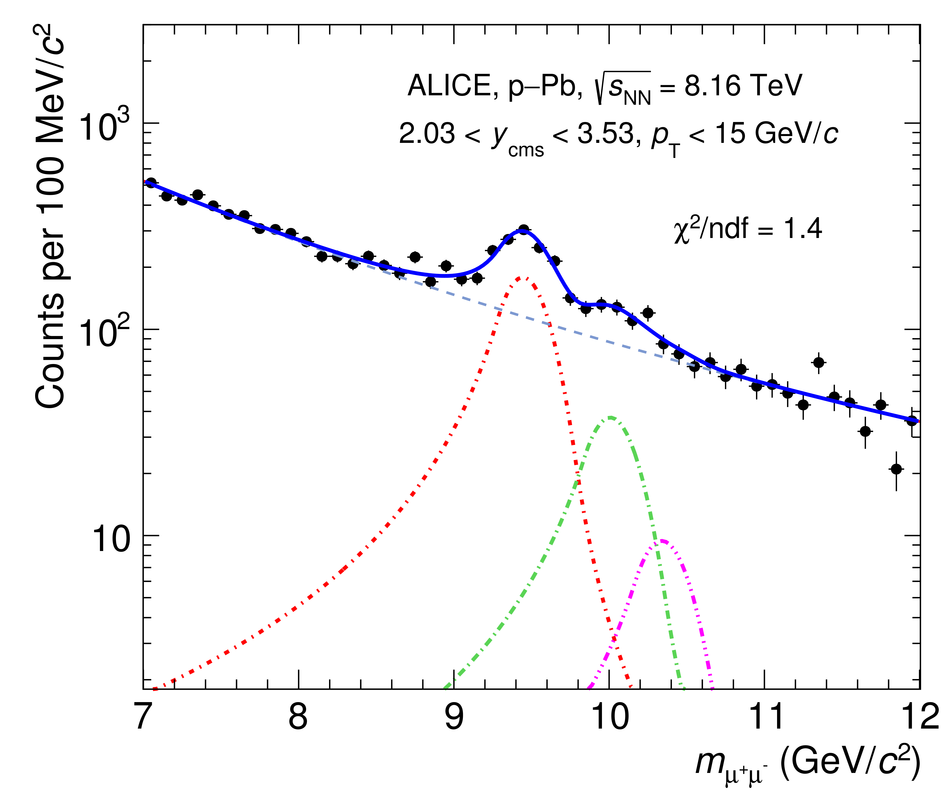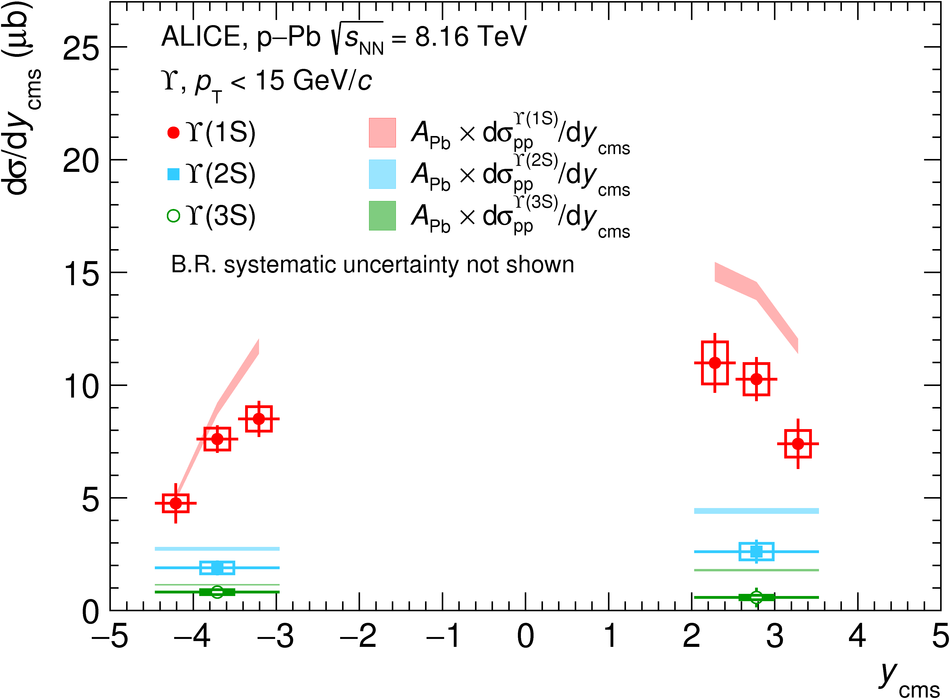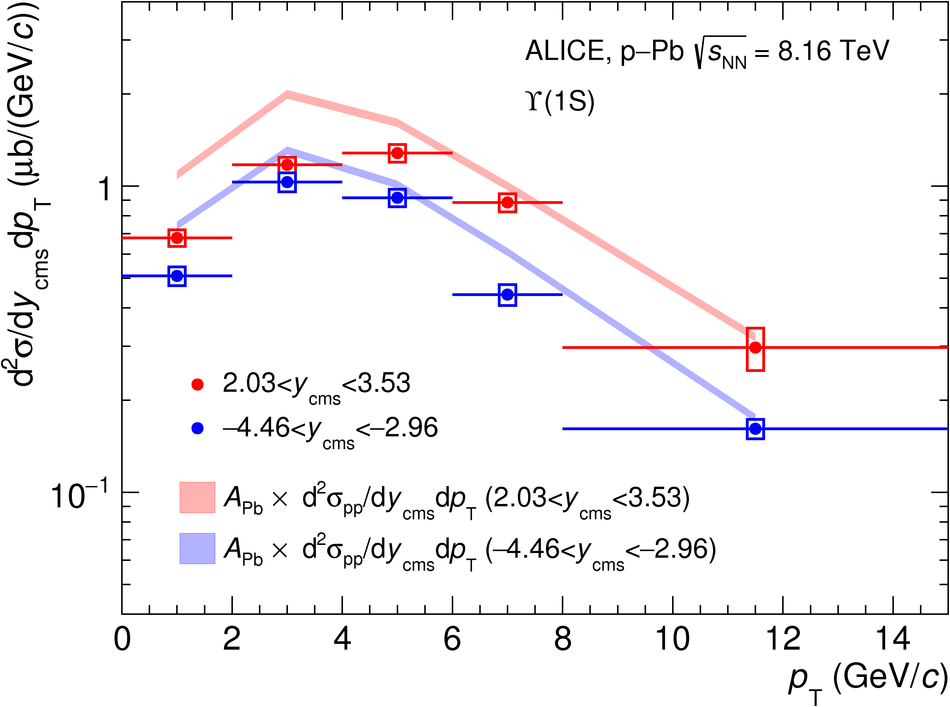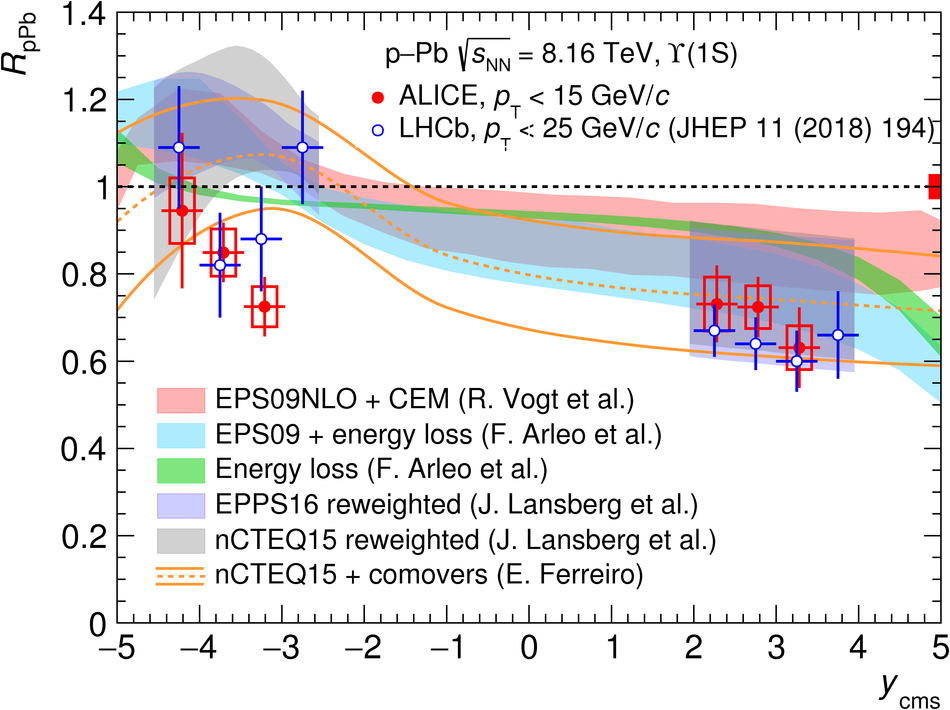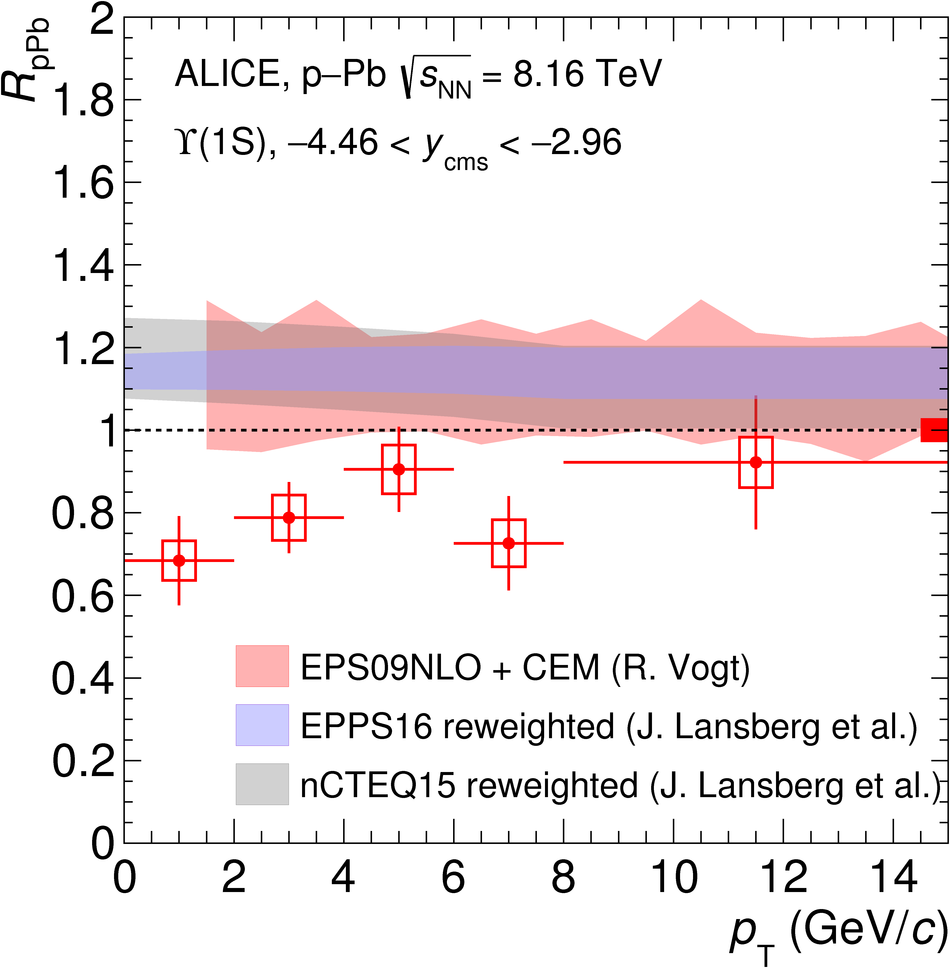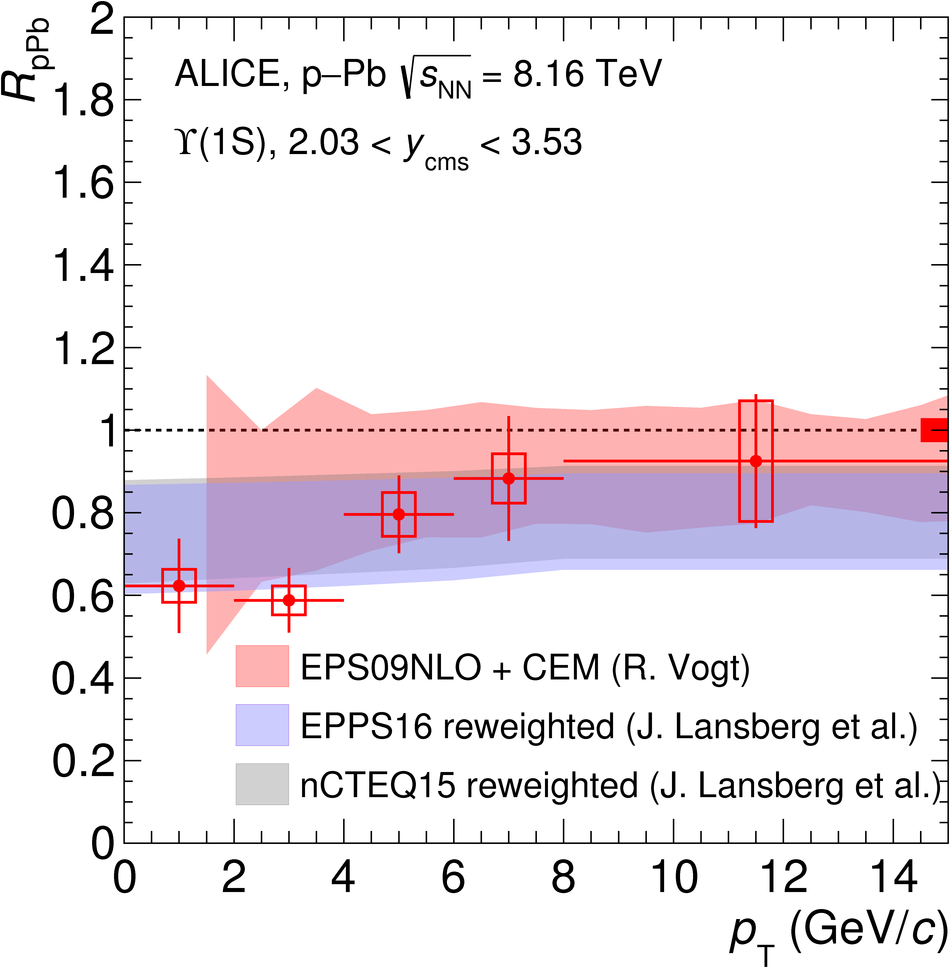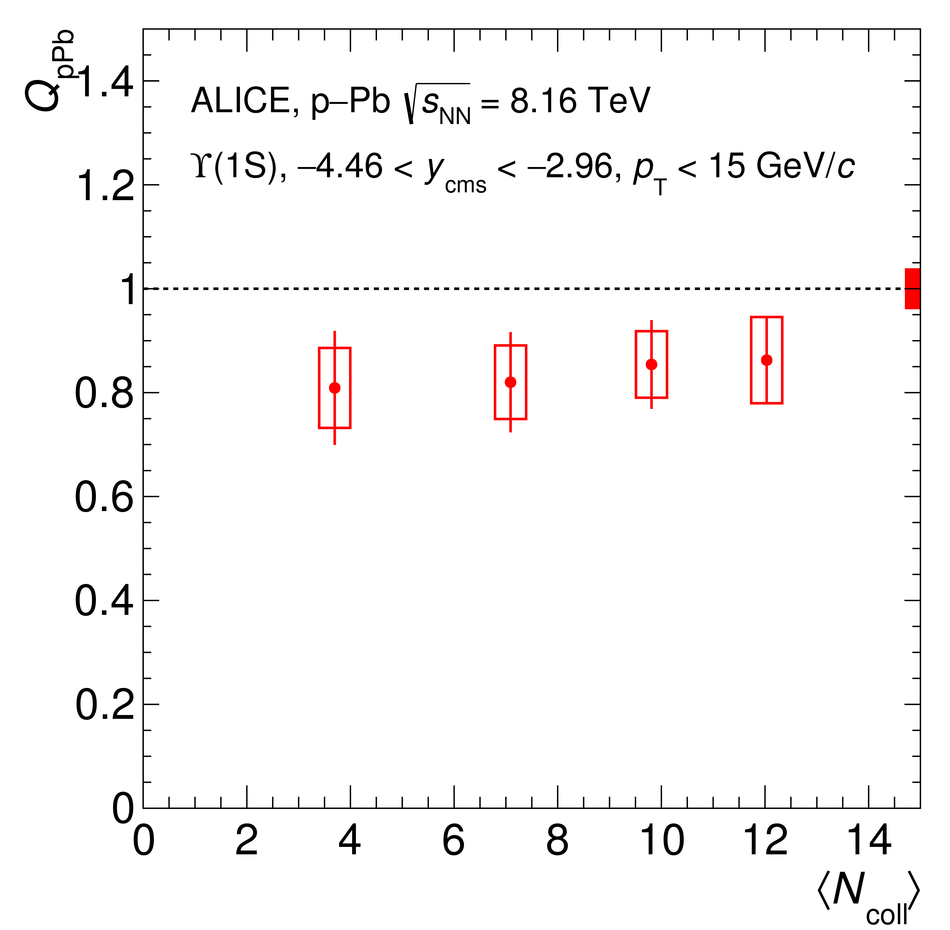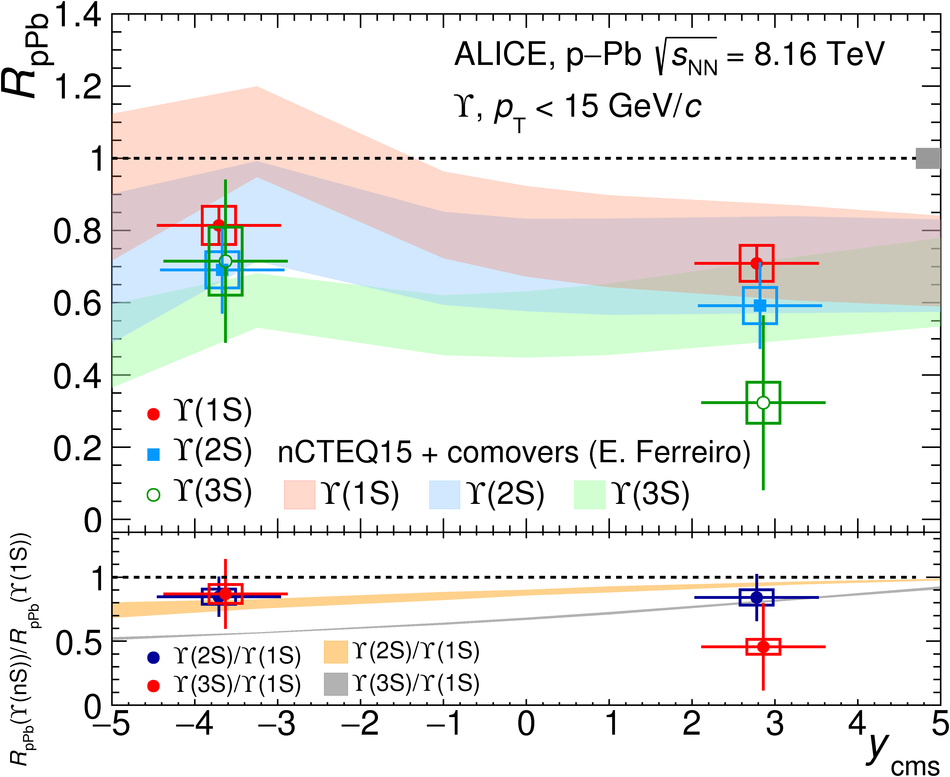$\Upsilon$ production in p-Pb interactions is studied at the centre-of-mass energy per nucleon-nucleon collision $\sqrt{s_{\rm{NN}}}$ = 8.16 TeV with the ALICE detector at the CERN LHC. The measurement is performed reconstructing bottomonium resonances via their dimuon decay channel, in the centre-of-mass rapidity intervals $2.03 <~ y_{\rm{cms}} <~ 3.53$ and $-4.46 <~ y_{\rm{cms}} <~ -2.96$, down to zero transverse momentum. In this work, results on the inclusive $\Upsilon(1\rm{S})$ production cross section as a function of rapidity and transverse momentum are presented. The corresponding nuclear modification factor shows a suppression of the $\Upsilon(1\rm{S})$ yields with respect to pp collisions, both at forward and backward rapidity. This suppression is stronger in the low transverse momentum region and shows no significant dependence on the centrality of the interactions. Furthermore, the $\Upsilon(2\rm{S})$ nuclear modification factor is also evaluated, suggesting a suppression similar to that of the $\Upsilon(1\rm{S})$. A first measurement of the $\Upsilon(3\rm{S})$ has also been performed. Finally, results are compared with previous measurements performed by ALICE in p-Pb collisions at $\sqrt{s_{\rm{NN}}}$ = 5.02 TeV and with theoretical calculations.
PLB 806 (2020) 135486
HEP Data
e-Print: arXiv:1910.14405 | PDF | inSPIRE
CERN-EP-2019-243

